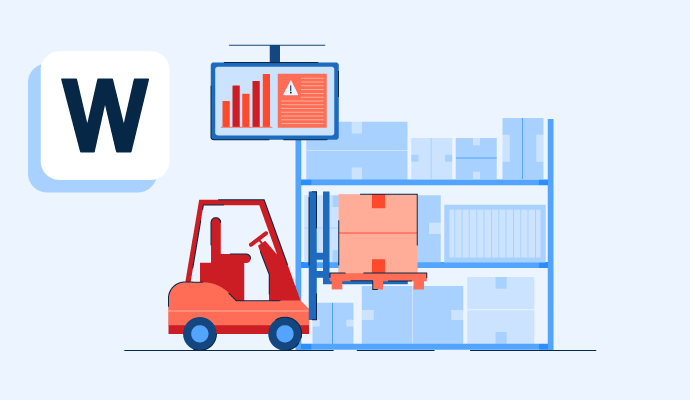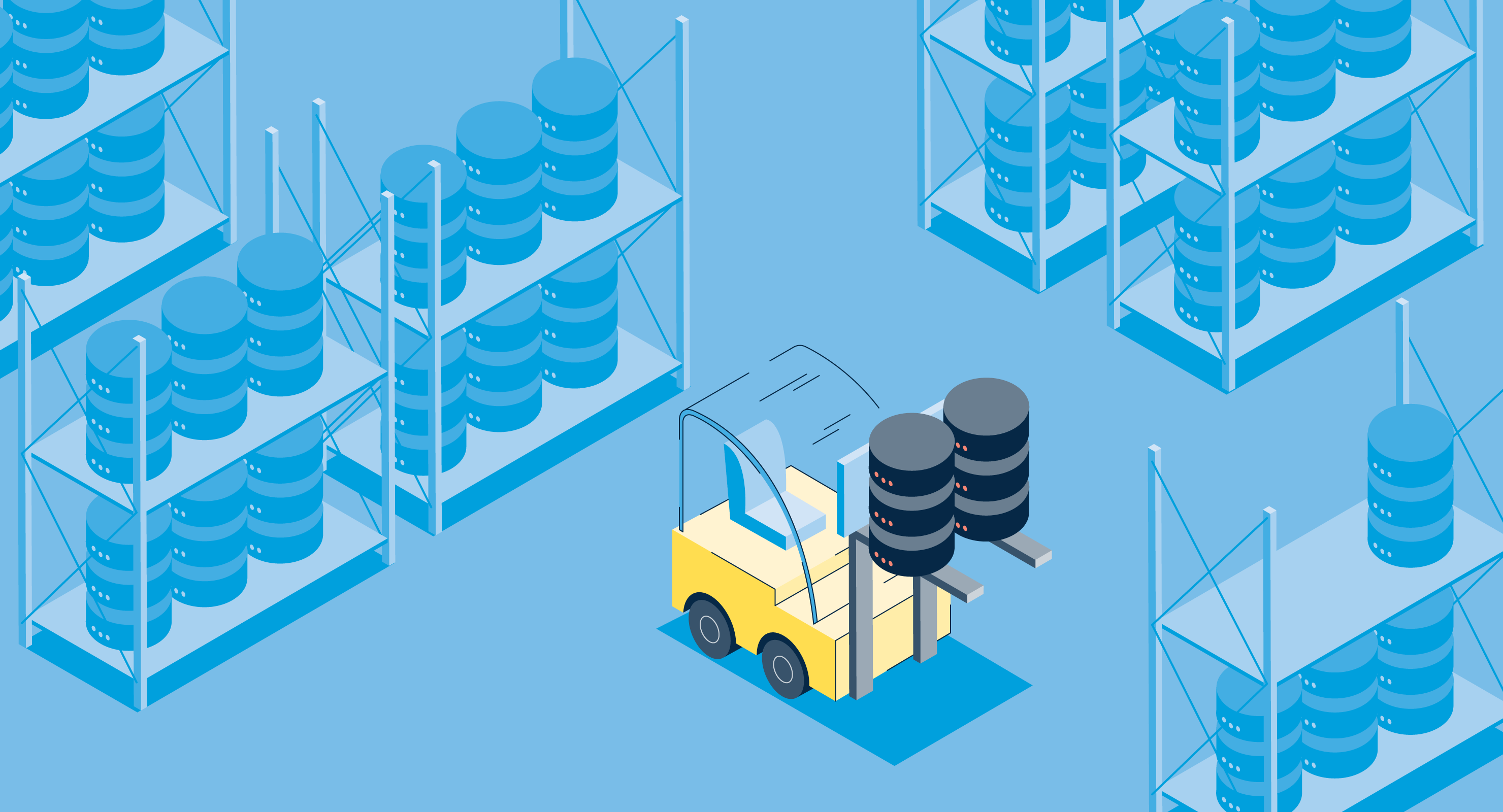What is warehouse management?
Warehouse management is the organizational system that warehouses or distribution centers use. It involves overseeing and optimizing all operational tasks associated with the inventory, storage, movement, and tracking of goods.
Warehouse management aims to ensure that the right products and quantities are available when and where they should be. The goal is to meet customer demand while minimizing costs and maximizing efficiency.
Companies use automation and technology, like warehouse management software (WMS), to create smooth workflows, improve fulfillment accuracy, manage inventory levels, and make performance more transparent. WMS tools also help take care of the warehouse’s labor and productivity levels.
Essential functions of warehouse management
A warehouse has to run like a well-oiled machine to achieve maximum efficiency and profitability. Some of the main tasks involved in warehouse management include:
- Inventory management. Stock enters and leaves warehouses daily. WMSs efficiently track inventory levels and storage so the company can promptly replenish stock.
- Order processing. Warehouse management promotes easy order fulfillment. To guarantee customers' orders get delivered on time, every step in the process, from picking to packing to shipping, must be executed well.
- Receiving. Warehouse management also requires companies to monitor their receiving operations. This comprises evaluating incoming goods for quality, quantity, and condition. If the team doesn’t document issues upfront, the company may end up taking a loss.
- Putaway. Once received, the warehouse team needs to find the most efficient storage spaces for their goods. The right area keeps products safe and unspoiled, maximizes available shelf space, and cuts down on the time workers need to find an item.
- Labor management. Labor represents a large chunk of a warehouse’s operating costs. Warehouse managers depend on systems to make sure they employ the correct number of employees and maintain high product productivity levels. Too few employees or a drop in productivity leads to a backup of orders or issues with fulfillment accuracy. Having too many employees increases the company’s overhead and cuts into its profits.
Types of warehouse management systems
When choosing a warehouse management system, companies have four primary options. The type they chose depends on their industry and warehouse size.
- Standalone WMS options are focused solely on warehouse needs. A customizable and affordable option, standalone WMSs integrate into a company’s existing tech stack. The tool presents features for improving warehouse operations and inventory management.
- Enterprise resource planning (ERP) systems sometimes include a warehouse management module. ERPs connect departments across large organizations to provide a big-picture view of the business and improve collaboration. Companies that go this route for their WMS enjoy the ease of an all-in-one platform.
- Supply chain module warehouse management systems offer visibility over the whole supply chain more visible, from procurement to shipping. A subcategory of supply chain suites, supply chain modules support companies with goals of improving vendor management and mitigating risk. If selecting this option, companies should watch for and avoid features that overlap with existing solutions.
- Cloud-based software-as-a-service (SaaS) systems are hosted in the cloud, meaning companies don’t have to invest in on-site servers and infrastructure. Saas warehouse management systems are often flexible and scalable.
Benefits of warehouse management
Adopting solid warehouse management processes saves companies time and money. Some specific advantages that arise from using a WMS system include:
- Enhanced inventory control. Companies prevent stockouts and overstocks with WMSs since they can track and manage inventory levels more precisely.
- Improved efficiency. Time-saving warehouse processes expedite order fulfillment and lower lead times.
- Precise order accuracy. Due to automated order processing, the warehouse sees fewer errors. That means the correct products get shipped to the right customers in an appropriate time frame, leading to fewer complaints and more customer satisfaction.
- Cost savings. Warehouse management touches all aspects of warehouse operations, from labor to inventory management. A good system lowers the company’s operational costs by reducing inefficiencies wherever necessary.
- Better real-time visibility. Warehouse management systems offer real-time analytics for fast, data-driven decision-making. Warehouse managers find problems on the spot and make proper changes to avoid downtime and increase productivity.
Warehouse management best practices
Effective warehouse management doesn’t happen overnight. Follow these best practices when conducting warehouse management:
- Design an efficient layout. To save time for workers, a warehouse needs a layout with short distances for emptying and replenishing the shelves. Teams can keep high-demand items in a logical place for easy access and regularly adjust the design based on changing needs.
- Lean on technology. When a warehouse runs on manual systems, the likelihood of human error increases, and spotting inefficiencies becomes challenging. Companies should use WMS to automate essential processes, along with barcode or radio-frequency identification (RFID) technology for quick and accurate data capture.
- Prioritize safety. A warehouse must adhere to safety regulations to avoid penalties and liabilities, but most importantly, to keep employees safe from harm. Warehouse managers should schedule regular safety audits and inspections to find and fix potential dangers and reduce accidents, injuries, and costs.
Leaning toward an all-in-one solution for warehouse management? Explore the benefits of an ERP system.

Kelly Fiorini
Kelly Fiorini is a freelance writer for G2. After ten years as a teacher, Kelly now creates content for mostly B2B SaaS clients. In her free time, she’s usually reading, spilling coffee, walking her dogs, and trying to keep her plants alive. Kelly received her Bachelor of Arts in English from the University of Notre Dame and her Master of Arts in Teaching from the University of Louisville.

